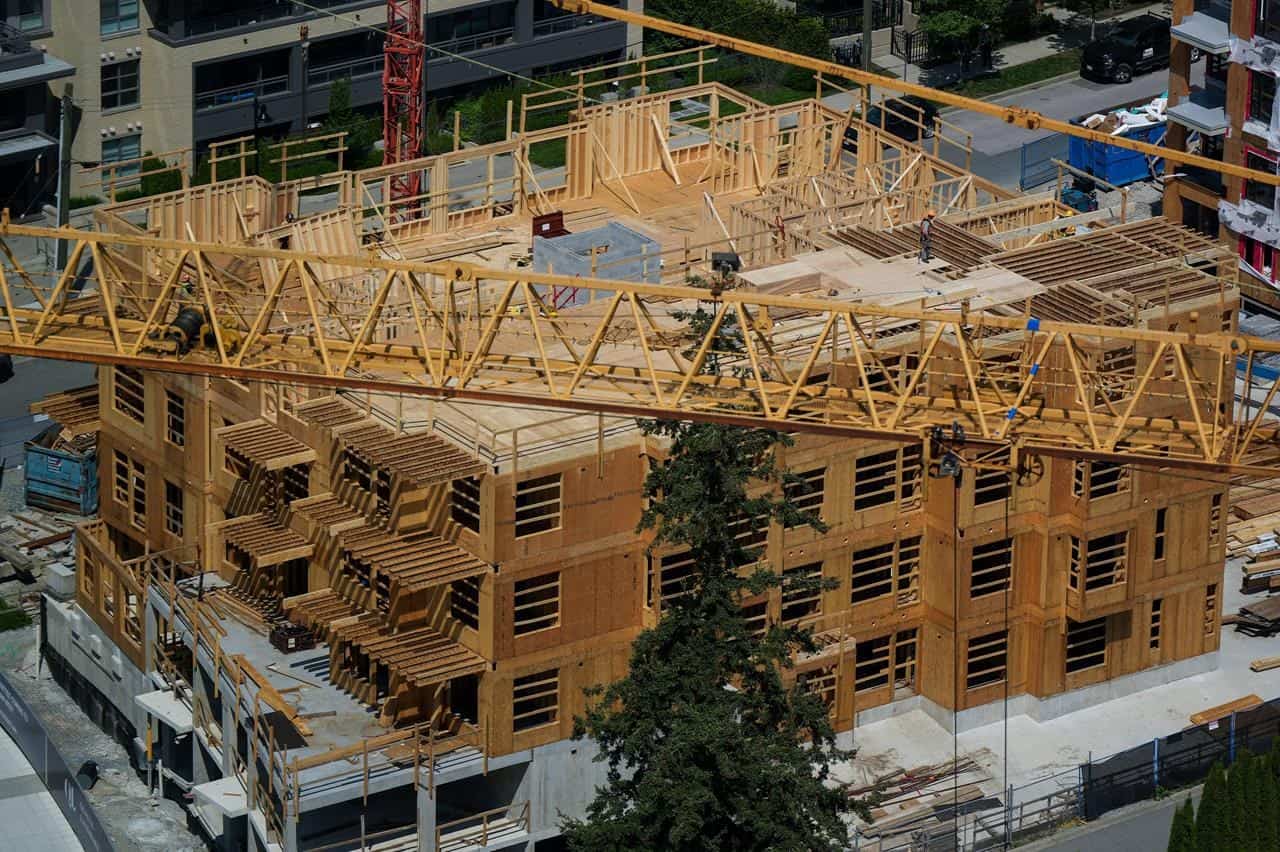The government needs to turbocharge construction innovation to get homes built faster: experts
Published August 20, 2023 at 8:02 am

Canada’s national housing agency has warned that millions of homes must be built within less than a decade to balance the housing market, but even it seems doubtful that its own target is achievable.
The current pace of housing starts is not just lagging.
It’s headed in the wrong direction.
Last year, the Canada Mortgage and Housing Corp. said 5.8 million homes would need to be built by 2030 to restore housing affordability for Canadians. The current pace of building only puts the country on track to construct 2.3 million homes by then.
And the CMHC said on Wednesday that the annual pace of housing construction starts fell 10 per cent in July when compared with June, when they had posted their strongest showing so far this year.
The seasonally adjusted annual rate of housing starts in July came in at 254,966 units, compared with 283,498 the month before.
The CMHC’s deputy chief economist Aled ab Iorwerth said that while the corporation is still working on updated figures for how many homes need to be built to restore affordability, the data aren’t encouraging.
“At the moment, we’re projecting that fewer (homes) will be built by 2030 than we projected last year,” Iowerth said in an interview.
There are a host of reasons why Canada isn’t building enough homes.
In the immediate term, high-interest rates are weighing heavily on the construction industry. But labour shortages and outdated construction practices are also causing bottlenecks.
Leading policy experts, advocates and industry representatives are asking the federal government to take a leadership role and help fast-track the pace of building.
A report released on Tuesday recommends that Ottawa create an industrial strategy on housing led by private and public builders, experts, investors and labour groups.
The report was published through collaboration between the Canadian Alliance to End Homelessness, the Smart Prosperity Institute and REALPAC, a national real-estate industry group.
“We have an industrial strategy for everything from lentils to aerospace, but we don’t have one for housing construction, despite the fact that it’s such a large portion of our economy — and it’s going to be absolutely needed,” said Mike Moffatt, senior director of policy and innovation at the Smart Prosperity Institute.
An industrial strategy usually sets out a plan on how to grow a certain part of a country’s economy.
The report also calls for a national workforce and immigration strategy on housing, as the construction industry warns a wave of retirements is looming and threatens to slow construction even further.
Kevin Lee, the CEO of the Canadian Home Builders’ Association, said 20 per cent of the workforce is set to retire over the next decade.
“It’s been going on for a little while. And so we definitely have a workforce shortage,” Lee said.
Although job vacancies in construction have eased since last year, there were 64,315 vacancies in the first quarter of this year, according to Statistics Canada.
Part of the solution to the workforce shortage is leveraging immigration to get more skilled trade workers into the country, according to industry and housing experts.
The Liberal government’s latest immigration targets, announced last fall, aim to bring in half a million people annually by 2025. The plan has prompted concerns about the pressure that high population growth could put on housing supply.
But Prime Minister Justin Trudeau’s government says newcomers can help get more homes built.
It recently announced changes to the express-entry system that would prioritize tradespeople for permanent residency.
Lee agrees that immigration can be part of the solution to the country’s housing challenges.
“We need to bring people into Canada that are interested in working in residential construction and have an affinity to working in residential construction,” Lee said.
“And there are obviously productivity gains that we need to make as well to help build more houses and not need as many people.”
Moffatt, who has become a leading voice on housing policy in the country, often mentions his father when talking about how the industry needs to find ways to improve productivity.
He said his father has was a sheet metal worker in the 1960s and 1970s. Over the course of more than 50 years since then, Moffatt said, the way his father does his job hasn’t changed much at all.
“There’s no way that we’re going to be able to triple homebuilding by just doing everything we’re doing now,” he said.
Lee said there’s an opportunity to increase productivity through factory-built approaches.
Modular home building is one of the ways the industry is trying to innovate. It involves manufacturing components off-site and assembling them like building blocks.
But such techniques can be risky to take on, Lee said, which is why the industry is hoping the federal government can provide tax credits and other incentives that would reduce the financial risk associated with using new technologies.
“We do expect that we’re going to need a little bit of assistance from government, because there are higher overheads (and) there are greater risks to creating companies that rely more on the factory-built approach,” Lee said.
The federal government is facing mounting political pressure to address affordability and has signalled its intent to do more on housing.
Cabinet ministers are heading to Prince Edward Island this week for a post-shuffle retreat, where they are expected to hear from Moffatt on housing policy.
The Liberals have also been consulting with a range of stakeholders as they gear up to put forward expected new measures on housing over the next year.
Lee said his organization is offering feedback on how Ottawa can help spur productivity improvements.
“We’re making the recommendations. I’ll say that.”
This report by The Canadian Press was first published Aug. 20, 2023.
Nojoud Al Mallees, The Canadian Press
insauga's Editorial Standards and Policies advertising





